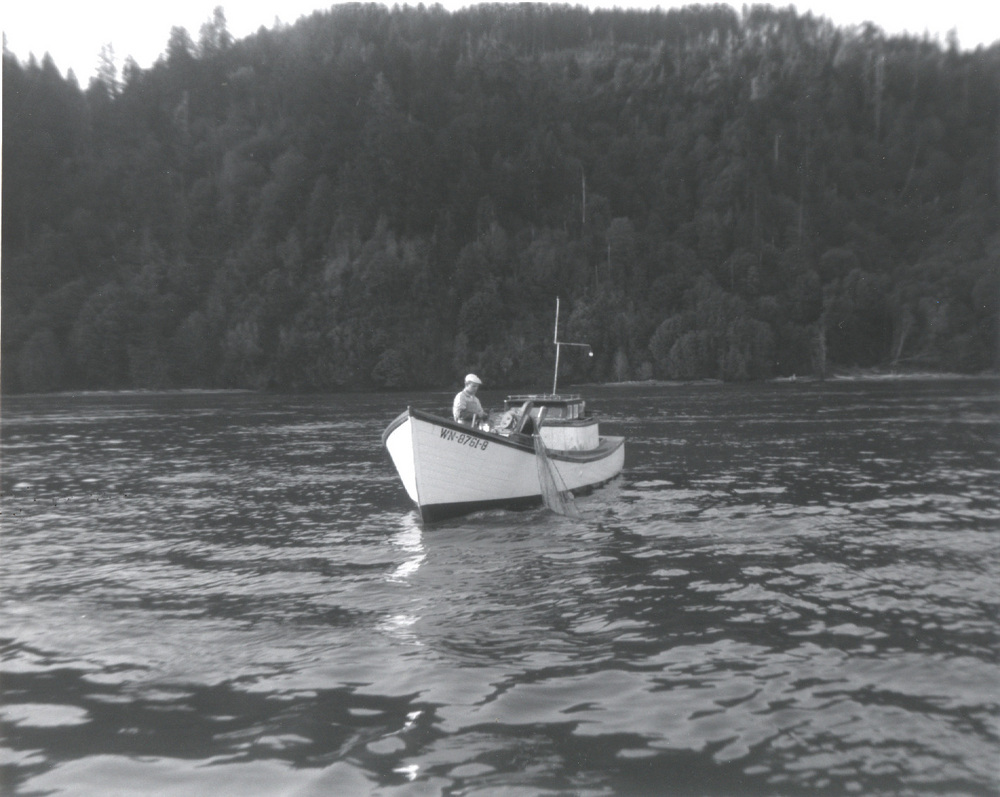A bowpicker is a fishing boat that was developed on the Columbia River for the salmon gillnet fishery.
In the nineteenth century, fishers on the river used wooden, double-ended, two-person sailboats that were powered by oar and sail. Picking nets by hand with no mechanical assistance was heavy, difficult work, and the introduction of a roller to handle the net helped bear some of the weight while the net was being picked.
The invention of the gasoline engine in the late nineteenth century changed the way the fishing boat was designed. The new boats had a flared bow, a square stern, and a cabin in the stern. Fishers piled their nets in the bow and laid them out along the side of the cabin and over the stern. The fishers stood in the bow to pick the net before removing the fish, putting them in the locker, and piling the net in the bow. Mechanized rollers, followed by the hydraulic roller (invented in Clatskanie, Oregon), substantially reduced the labor involved in net hauling.
Bowpickers developed into the industry standard for the salmon gillnet fishery on the river after World War I. In Oregon, the boats were built by Columbia Boat Works, the Bumble Bee Shipyard, the Union Cannery boatyard, and numerous small boat shops such as Astoria Marine Construction Company (AMCCO), run by Joe Dyer and then Don Fastabend. Adolph Lindstrom and Tim Driscoll were well known for their skill at building bowpickers.
The boats were used in inshore salmon fisheries from Oregon to Alaska. In the 1970s, boats called “bowreelers” appeared, with reels to wind the net on board. Those built to wind the net in the stern became known as "sternreelers."
Bowpickers are still used in the Columbia River gillnet fishery and are affectionately known as "muzzle-loaders." Others have been purchased and restored by collectors.
-
![Kent Martin in Columbia River bowpicker, 1962, built by Elo Katu of Astoria.]()
Bow Picker.
Kent Martin in Columbia River bowpicker, 1962, built by Elo Katu of Astoria. Photo by Terry Norberg
Map This on the Oregon History WayFinder
The Oregon History Wayfinder is an interactive map that identifies significant places, people, and events in Oregon history.
Further Reading
Martin, Irene. Legacy and Testament: The Story of Columbia River Gillnetters. Pullman: Washington State University Press, 1994.
Work is Our Joy: The Story of the Columbia River Gillnetter. Video. Written by Irene Martin, produced by Larry Johnson. Oregon State University Extension Sea Grant and the Columbia River Maritime Museum, 1989.

